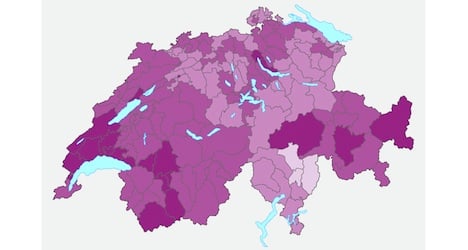Several editorialists saw Sunday’s referendum result as a swing of the pendulum against the decision approved by voters on February 9th to back unspecified immigrant quotas.
In the latest vote, more than 74 percent of voters rejected the Ecopop proposal to limit annual net immigration to 0.2 percent of the population to slow population growth, limit urban sprawl and protect Switzerland’s environment.
Opponents, including the federal government, argued the proposal was xenophobic and would harm the country’s economy by reducing access to skilled workers it needs from abroad and cannot supply domestically.
The overwhelming rejection shows that Swiss voters have not lost sight of “how important it is to have an appropriate relationship with the European Union,” an editorial in Der Bund said.
The result allows the federal government and parliament to develop a “soft implementation” of the immigrant quotas, approved by voters at the beginning of the year, it said.
That initiative gave the government three years to implement the quotas through negotiation with the EU, although this policy runs against the “freedom of movement of people” accord which the Swiss earlier signed on to with Brussels.
The Nordwestschweiz newspaper said while there is relief over the latest referendum result, it is clear that voters will soon have to return to the polls “on the free movement of persons and relations with the EU”.
Though the message sent by voters was “amazingly clear” this is not a reason to celebrate, Neue Luzerner Zeitung said.
Switzerland’s future relationship with the EU is its “number one foreign policy problem”.
The no vote for Ecopop should not be mistaken for a yes vote for bilateral relations with the EU, the newspaper said.
The day of reckoning with Europe is “only postponed not cancelled”.
Other newspapers noted that the high percentage of voters against Ecopop came as a surprise, given that polls showed a closer result, with the unsuccessful campaign earning the unflattering nickname “ecoflop”.
“This is a success for all advocates of an open and prosperous Switzerland,” the Galler Tagblatt said in an editorial.
The rejection for Ecopop is helpful, the newspaper said, but it still leaves the federal government with the challenge of reducing immigration while maintaining bilateral relationships with the EU.
Voters clearly found that Ecopop was “too extreme”, the Berner Zeitung said.
French-language Le Temps said the clarity of the vote against the Ecopop initiative should not change the strategy of the federal government’s plan to “strictly implement” quotas for immigrants, as approved by the February 9th vote.
Interpreting the latest vote as a correction of the earlier one would be a “serious mistake”, the Geneva-based newspaper said.
Voters refused Ecopop because they had confidence that the federal government was going to act according the “popular will” to implement immigration quotas, it said.
To betray that “fragile confidence” could only play into the hands of the right-wing Swiss People’s party with future possible votes on such issues, for example, as the primacy of Swiss law (over EU law).
Pierre Ruetschi, editor of the Tribune de Genève, said the referendum result should have an impact on the implementation of the government’s implementation of the February 9th initiative against “mass immigration”.
But “the people will not tolerate putting in question new limits for immigration,” he said in an editorial.
“On the other hand, it seems clear that they do not want to sacrifice bilateral agreements and future relations with the European Union.”



 Please whitelist us to continue reading.
Please whitelist us to continue reading.
Member comments